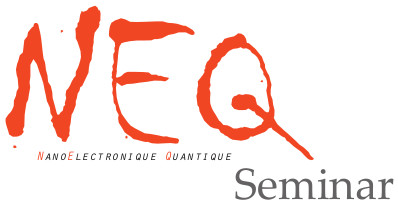- Accueil
- Institut Néel
- Équipes de recherche
- Pôles & Services techniques
- Travailler à l’institut
- Partenariats
- Actualités
- Agenda
- Annuaire

Zoom link : https://univ-grenoble-alpes-fr.zoom.us/j/91808901596?pwd=UWZ2cml2N1VBOEZBenk0d3RJek9rdz09
Resumé/Abstract: Two-level systems and quasiparticles are believed to lie at the origin of noise and decoherence in superconducting quantum devices. For the development of quantum technologies, it is important to understand such systems, and possibly overcome the limitation they impose. A step further in this direction is unveiling their nature, which can be discerned in terms of how they interact with micro or nano-devices. To study the physics of two-level systems (TLSs) we make use of T-shaped biased resonators. Their resonance frequency and quality factor are probed simultaneously with a microwave interferometer while applying a dc or rf bias signal. Random telegraph variations are detected in both the resonators’ frequencies and quality factors, allowing us to test their correlation, and investigate the time evolution of these parameters. We observe that a milli-Volt bias can tune the resonance frequency of TLSs, while a voltage of the order of few Volts completely changes the system dynamics. Using a rf bias we perform a two-tones spectroscopy analysis, and reveal a reduction of frequency fluctuations and quality factor at low frequency and high tone power. The effect of out of equilibrium phonons is analysed by using a gated superconducting nanowire. We study the suppression of superconductivity in sample geometries where the roles of electric field and electron-current flow can be clearly separated. Our results show that suppression of superconductivity does not depend on the presence or absence of an electric field at the surface of the nanowire, but requires a current of high-energy electrons. Our observations question existing interpretations and theories based on electric fields and contribute towards understanding the complex interactions between out-of-equilibrium phenomena in solids and performance of superconducting hardware.
